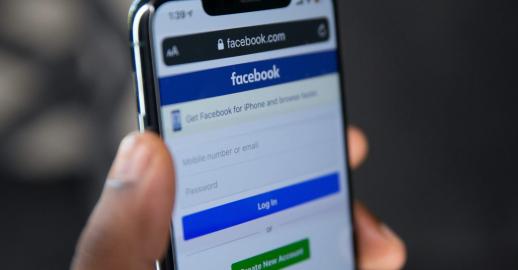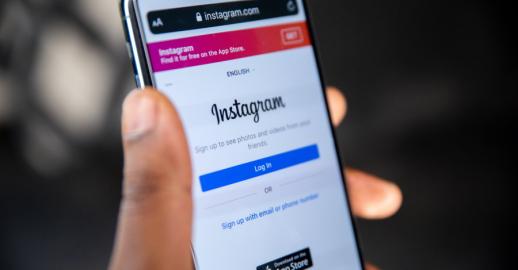How to Use Twitter Auto-reply Campaigns to Increase Engagement

23rd August 2019
While I was scrolling through Twitter earlier this week, I came across this post from Channel 4:

“Like this tweet to set a reminder?” I thought, immediately curious. How does that work, then? I’d never seen a tweet offering to remind me of anything before. So of course, being a Great British Bake Off fan, I liked the post to see what, if anything, would happen.
A moment later, I received a notification that Channel 4 had tweeted me with this:

My liking the first tweet triggered an automated tweet to be created mentioning me, confirming that they would send me a tweet to remind me about the show in a week’s time. I didn’t need to do anything else – I’d get another tweet on Tuesday which would serve as my reminder that the show will be on that night. Notably, I had to opt in to receive this communication, and they have allowed me to cancel my reminder by replying to the tweet, which is a quick and easy way to unsubscribe. I probably don’t need a reminder, but I liked this anyway because it feels nice to be part of a community of people excited about something online. And I love the images they decided to use to accompany both of these tweets – they’re appropriate to the message and very on-brand. This is the kind of marketing I actively enjoy seeing on social media. The question is, how did Channel 4 set up this auto-reply, and how can other businesses use similar marketing techniques to drum up excitement and build brand visibility?
How can you automate your Twitter activity?
There are a few different ways you can automate your Twitter activity. There is the auto-reply example above, and other examples such as message scheduling (from a third party such as Hootsuite), and automated direct messages. It’s worth noting that auto-replies are of course different from the automated direct messages some accounts send out when you first start to follow them. I’ve had a few of these sent to me and they are generally promotional – I’m not a fan. My following an account doesn’t mean I want a message from that person or business, and if I wanted to get in touch immediately, I’d message them myself. Pinned tweets can do a good job of drawing a new follower’s attention to whatever particular tweet you want to promote, without annoying them with an immediate DM. By contrast, auto-replies rely on the person initiating contact by interacting with a tweet first.
There are also bots on Twitter, which may be used by businesses or individuals. Bots do have a reputation for being annoying, intrusive or irrelevant, but they can certainly be used for good, too. For example, there is a bot that retweets people’s dreams about Donald Trump, and another that tells you how you died in medieval times. Sometimes entire accounts are bots, while in the case of Channel 4, automation is used selectively to deliver useful features to followers, while maintaining a human aspect for the rest of the account. Bots can be fun, but they can be useful, too – and in the right hands, automation can delight users, increase brand engagement and visibility, and even turn followers into customers.
Why automate your Twitter activity?
Some of the benefits of Twitter automation, and auto-reply campaigns specifically, are:
- You can save time by handing repetitive tasks to a bot
- Followers can engage with your brand even when you’re not there
- You can make users feel special by providing them with exclusive content
How can you use Twitter auto-reply campaigns for your business?
In order to create an auto-reply campaign, you’ll need to use a third-party – you can’t do this within Twitter itself. However, there are plenty of companies you can use to create this type of campaign.
As for which situations you might like to apply it in, you could use auto-reply campaigns in a variety of ways, for example to:
- Remind people when your latest product goes on sale or is available to pre-order, to drum up excitement and anticipation
- Send people exclusive content or offers for your product or service, to encourage sales and make people feel special
- Send people links for downloading useful information such as guides or whitepapers, to position yourself as an expert within your industry
As with all things marketing, you’ll want to approach this with your goals in mind. Do you want to increase sales, improve brand visibility, get people to contact you, or something else? The answer to this question will help you determine what you tweet initially, how your replies will be worded, whether you’ll include a link to content on your website, which page you’ll use for this, and what you want visitors to do when they get there to keep the lines of communication open. Remember, to register their interest or begin an interaction, users need to like a tweet or reply to it with a specific keyword or emoji. Following you isn’t enough, and users should need to specifically opt in and be able to opt out if the communication will be ongoing.
Here’s an example of how you could use auto-replies and tailor your reply to the person, based on how they reply to you. For example, a drinks company bringing out two brand new flavours might tweet asking people which flavour they would like to try. You can even add buttons to the tweet so that the tweet is automatically created for the user and they just need to hit the post button. Then, depending on whether the user replies with “Orange” or “Blackcurrant”, you could send an auto-reply to them with a link to a landing page where they can get a coupon for a free drink in the flavour of their choice. (And of course, the landing page would ideally contain other calls to action for further engagement such as a newsletter subscription or a link to products in the company’s online store.)
When shouldn’t you use auto-reply campaigns?
Auto-replies can be a great marketing tool for drumming up interest and suspense, and providing new and exciting content. However, you should carefully consider whether it’s appropriate to use auto-replies for each particular situation, as they won’t work well in some contexts. For example, if you are experiencing technical difficulties or your premises is closed, you could set up auto-replies to target tweets to you that contain particular keywords, so you can explain to each person what’s going on. This could save you a lot of time replying to everyone individually, but you’d need to be very careful about how you set it up because if your tweet doesn’t make sense as a reply to their tweet, this could make for some very confused and unimpressed followers. The same goes for any customer service scenario - as a rule, don’t use auto-reply for interactions that require more thoughtful and specific human input, and make sure to look at Twitter’s automation policies before you proceed.
I believe that automation works best when it’s clear that automation is being used. That’s why these examples of liking for a TV show reminder and voting for your favourite product all work well – because it’s unlikely that users expect a human reply to this. However, people do expect human replies for their various, often nuanced questions about your products and services, so unless they have a simple, frequently asked question and they’re made aware that they’re talking to a bot, a real person is likely best placed to deal with their query.
Automation is infiltrating many aspects of digital marketing, and it can be a great way to save time, get creative with your marketing, engage with your customers and show that you’re a progressive company, up to date with the latest social media trends. Contact us to find out how automation and social media marketing can fit into your digital marketing system and help you reach your ultimate business goals.






